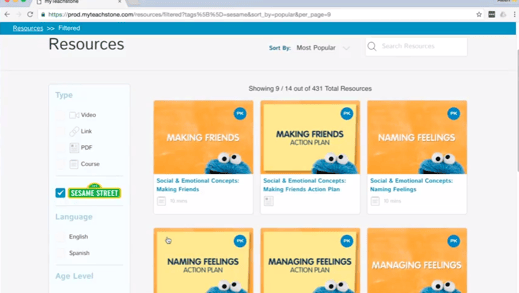
To talk about CLASS, you have to start with kids. Beginning anywhere else just doesn’t capture what’s at the heart of CLASS: interactions that help children grow and improve their outcomes.
That’s why Teachstone’s newest teacher PD series in myTeachstone is organized around teacher’s real experiences with children. Created with the learning experts at Sesame Workshop, the non-profit that brought you Sesame Street, the courses open by asking teachers to think about a specific interaction with a child:
"Think of a recent interaction you’ve had with a child who worked hard to solve a problem.
How did the child initially respond to the challenge?
How did you support this child’s effort to think through and plan for possible solutions?"
From the course “Social & Emotional Concepts: Problems & Solutions"
Given all that we ask of our teachers, CLASS can feel like something new or extra and can often feel overwhelming. But teachers are already interacting with their students in ways that help them grow. And they already think about how they can better support children’s development within specific content areas.
Instead of talking about CLASS as something new that teachers need to “do” and change, the tool provides a teachers a way to build on and dig deeper into the work that they are already doing. For example, the new course on problems and solutions capitalizes on teachers’ desires to help children shift from just reacting to difficulties to identifying and resolving them.
At the start of each course, teachers are asked to keep a child and specific learning outcome in mind as they see the ways in which the effective interactions described by CLASS help children grow. The course then exemplifies the value of CLASS and the proven content-specific strategies with real classroom footage or a vignette. Finally, teachers are given an opportunity to reflect on their current practice and making a plan for how they’ll use what they’ve learned to help their students.
In order to be meaningful for teachers, we can neither separate CLASS from the specific children in their care, nor can we isolate interactions from teachers’ value: that they help children grow. These courses regard teachers’ number one priority, to improve child outcomes, and help them use CLASS as a language and lens to help them meet this priority, everyday.

